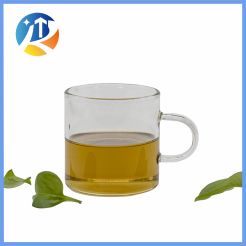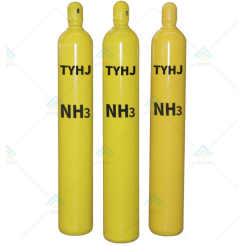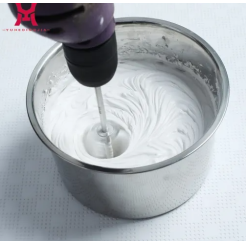Insecticide Pirimiphos-Methyl CAS 29232-93-7 Mosquito Killer
Pirimiphos-methyl, like other organophosphates, is an acetylcholinesterase inhibitor. It has contact killing, gastric toxicity, fumigation, and certain internal suction effects.
Product Description
Introduction
| CAS | 29232-93-7 |
| Molecular formula | C11H20N3O3PS |
| EINECS | 249-528-5 |
| MW | 305.33 |
| Customs code | 2933599011 |
| Appearance | Light brown liquid |
| Content | 90%TC |
| Standard | Purity ≥91(%) Water ≤0.05(%) Acid Value(H2SO4) ≤0.01(%) |
Pirimiphos-methyl, like other organophosphates, is an acetylcholinesterase inhibitor. It has contact killing, gastric toxicity, fumigation, and certain internal suction effects. Its insecticidal principle is to cause the accumulation of acetylcholine in the body of stored grain pests, causing cholinergic nerves to continue impulsively and die. At the same time, due to its long residual effect, it also has a continuous protective effect.
Action mechanism
Like other organophosphorus, methylpyrimidine is an inhibitor of acetylcholinesterase. It has touch, stomach poison, fumigation and certain internal absorption. The principle of its insecticidal action is that Chemicalbook causes the accumulation of acetylcholine in stored grain pests, so that the cholinergic nerve will continue to impulse and die. At the same time, because of its long residual period, it also has the effect of continuous protection.
Chemical property
The original drug of methylpyrimidine phosphorus was yellow liquid, m.p. 15-17 ℃. The relative density of pure product is 1.157(30℃), refractive index n25D1.527, vapor pressure is 1.333×Chemicalbook10-2Pa(30℃). Soluble in most organic solvents, solubility in water is about 5mg/L. It is easily hydrolyzed in strong acid and alkaline media, unstable to light, and has a half-life of about 3d in soil.
Main use
1, insecticidal spectrum, rapid action, strong penetration, both touch, stomach poison and fumigation. Mainly used for storage pests and health pests. For example, under the conditions of room temperature 30℃ and relative humidity 50%, the efficacy can reach 45 to 70 weeks. In Southeast Asia, 200g of 2% powder is applied to each ton of grain, which can be kept insect-free for 6 months. Spray the sack with chemicals, and the grain in the bag will be protected from sawworm, rice elephant, rice beetle, and powder moth for several months; If the sack is treated by dipping method, the validity period is longer. It can be used as an alternative variety of highly toxic organophosphorus pesticides.
2, organophosphorus insecticides, can be widely used in storage, family health, crops and other pest control
3, quick-acting, broad-spectrum insecticide, acaricide. It has good effect on food storage beetles, weevils, moths and mites. It can also control warehouse pests, household and public health pests.
Synthesis method
1. Preparation of diethylguanidine nitrate adding diethylamine according to molar ratio, adding about 200mL of mother liquor, then cooling with cold water bath, dropping 65% concentrated nitric acid (nitric acid/diethylamine =1.2 molar ratio) at 10 ~ 20℃, then adding 0.5mol lime nitrogen, gradually heating up to 70℃, and then holding temperature reaction 0.5 ~ 2h, 0.5mol CO2 gas was injected, the ventilation time was about 0.5h, and then the temperature was raised to 90℃ while the filter was hot, the filter cake was discarded, the filtrate was cooled to precipitate needle crystals, and the mother liquor was used for the next batch experiment. Preparation of 2-diethylamino-6-methyl-4-hydroxypyrimidine add 0.1mol of diethylguanidine nitrate, then add 120mL of toluene, stir, add potassium carbonate according to the ratio, and then heat up until a little reflux, then slowly add ethyl acetoacetate, the drip time is 1.5 ~ 2h, after the drip reflux and steam out low boiling matter, reflux reaction is 0.5 ~ 2h. Cool down, add 120mL of water, under the condition of full agitation, adjust the solution with hydrochloric acid to weak acidity (pH value of about 6), and then remove the solvent toluene (recovery and reuse) to obtain a light yellow granular solid. Synthesis of methyl pyrimidine phosphorus Add 0.10mol hydroxy-pyrimidine, then add 70mL ethyl acetate solvent, stir, then add acid binding agent anhydric K2CO3 according to the ratio, reflux for 1 hour, cooling to 45 ~ 50℃, drop a certain proportion of methyl chloride, temperature rise to reflux temperature, reflux reaction for 6 ~ 10h, cooling filtration, discard the filter cake. Yellow methylpyrimidine phosphorous crude oil can be obtained by removing the mother liquor (recovery and reuse).
3. Synthesis of methylpyrimidine phosphorus. Add hydroxy-pyrimidine 0.10mol, then add ethyl acetate solvent 70mL, stir, and then add acid bind agent anhydric K2CO2 according to the ratio, reflux for 1h, drop to 45-50 ℃, add a certain proportion of methyl chloride, rise to reflux temperature, reflux reaction for 6-10h, cool down and filter, discard the filter cake, and de-dissolve the mother liquor (recycling and reuse). Yellow methylpyrimidine phosphorous crude oil can be obtained.
First aid measures for methylpyrimidine phosphorus pesticide poisoning Poisoning symptoms:
Acute poisoning usually occurs within 12 hours, and oral administration causes immediate onset. Mild: headache, dizziness, nausea, vomiting, sweating, weakness, chest tightness, blurred vision, poor appetite, etc., the whole blood cholinesterase activity is generally reduced to 70-50% of the normal value. Moderate: In addition to the above symptoms, there are mild dyspnea, muscle tremor, constriction of the pupil, trance, unsteady walking, sweating, salivation, abdominal pain, diarrhea. In severe cases, coma, convulsions, dyspnea, foaming at the mouth, incontinence, convulsions, and respiratory paralysis may occur. Emergency treatment :[1] Atropine 1 ~ 5mg subcutaneous or intravenous injection (depending on the severity of poisoning)
[2] Intravenous injection with praloxime 0.4-1.2g (depending on the severity of poisoning)
[3] Morphine, theophylline, phenothiazine and reserpine are prohibited. [4] Immediately induce vomiting, gastric lavage, and catharsis (vomiting can only be induced when awake). Note: The drug is toxic and flammable. After diluting the emulsion with water, it should be used up at one time and cannot be stored to prevent the decomposition of the agent.

Email: senton3@hebeisenton.com
Mob.: +86 199 4348 8906
Tel.: +86 311 6800 1160
Add.: 17th COFCOHB Plaza No.345 Youyi North Street Shijiazhuang Hebei China










